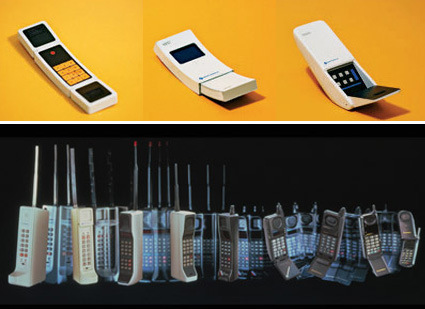American Heritage has a really good, detailed article on the birth of the personal cellphone business for Motorola. As with many-a-legacies, the story of the development of cellphones in Motorola is also filled with the excitement worthy of a Hollywood thriller: coming up with a imagination-capturing work within an impossible deadline, to thwart the impending AT&T’s application for monopoly rights over the cellular telephone business.
The biggest problem the Motorola team faced was time. At AT&T’s request the FCC had scheduled a new round of hearings for May 1973. This gave Cooper and his engineers less than three months to design and assemble a product that had never been built and still have time for testing and demonstrations for both the media and the FCC prior to the hearings. Everyone involved would have to drop everything.
After Motorola’s staff returned from the Thanksgiving holiday, Cooper got the ball rolling. Rudy Krolopp, Motorola’s ebullient lead industrial designer, was the first line manager to get the news, probably because he and Cooper exercised together. “Rudy, who was in excellent shape, put on physical fitness classes which I attended, where you really stretched yourself,” Cooper recalled. “The last exercise Rudy directed was one where we paired up and pushed on our partner’s chest. He always found some good looking babe as a partner.”
A little after 10:00 a.m. on Monday, December 4, Cooper summoned Krolopp to his second-floor office, “which was unusual,” Krolopp says, “because he usually came to mine to rap.” On his arrival he asked what Cooper wanted.
“We have to build a portable telephone,” Cooper answered.
“What the hell is that?” Krolopp asked.
“A phone you carry around with you.”
“That sounds interesting. Let me clean up what I’m working on.”
“No, you don’t understand. This has to be done in six weeks.”
And so, sketches were made and models built.
Krolopp chose eight or nine sketches, which were turned into models. The winner was a model nicknamed the “shoe phone” for its shape. It had been created by Ken Larson, a 10-year Motorola veteran. “His model looked like you could put it right into production,” Krolopp notes. “His wasn’t the best design in terms of creativity, but it was logical and very basic. It looked good and solved the problems.”
The day after Larson’s model was chosen, cooper gathered a group of engineers and managers, including Mitchell, Richardson, Chuck Lynk (Linder’s boss), and James Mikulski (who worked on overall systems design), along with various Motorola executives, most of whom knew nothing of the project. Krolopp draped Larson’s model under a piece of blue cloth and stood by as Cooper described the project and the schedule. When he was done, Krolopp pulled the cover off Larson’s model.
“Eyes opened and jaws dropped, because it was really small,” Krolopp remembers. Cooper issued a challenge: “Anybody who doesn’t believe that this can’t be done in time, get up and leave the room.” “With the kind of egos we had in the room,” Krolopp says, “no one got up.”
And of course, the fairytale ending, without which we may not know Motorola as a brand today:
After all this, reporters finally got a chance to use the two Dynatac phones, which performed flawlessly. Gene Smith of The New York Times reported that “reception was clear, although the wife of one reporter told her husband, ‘Your voice sounds a little tinny… . There’s no resonance. I knew you weren’t calling from a regular phone.’”
Mitchell then went down to the street with one of the handsets and made a few calls while posing for photographers in front of some suddenly old-fashioned pay phones. In the flood of stories that poured out the next day, reporters noted that pedestrians were “agape” at a man making a wireless call. In a prescient lead paragraph, the AP reporter noted, “There may be no way to escape the strident summons of a telephone in a few years if a portable telephone developed by Motorola Inc. catches on.”
Snapshots of early models:

Top row: The initial concept models, not much different from today’s phone actually – double-flips, slide out and one with flip-mouthpiece. Bottom row: Evolution of phones from 1973 – 1998
Do read through the full article over at American Heritage. Cell phones are so ubiquitous today that it’s hard to imagine a world without them. The article is one of the best primers on early cell phone developments, documenting the colorful encounters of Motorola changing the course of cellular network.









